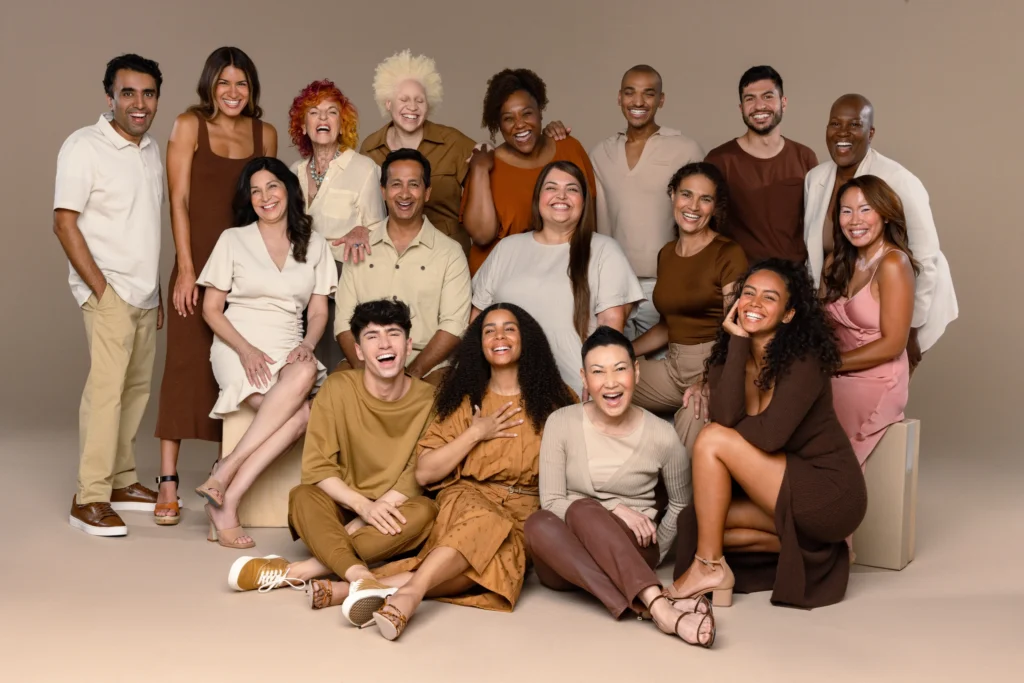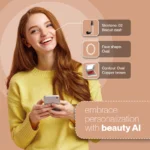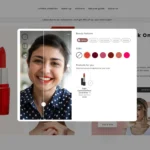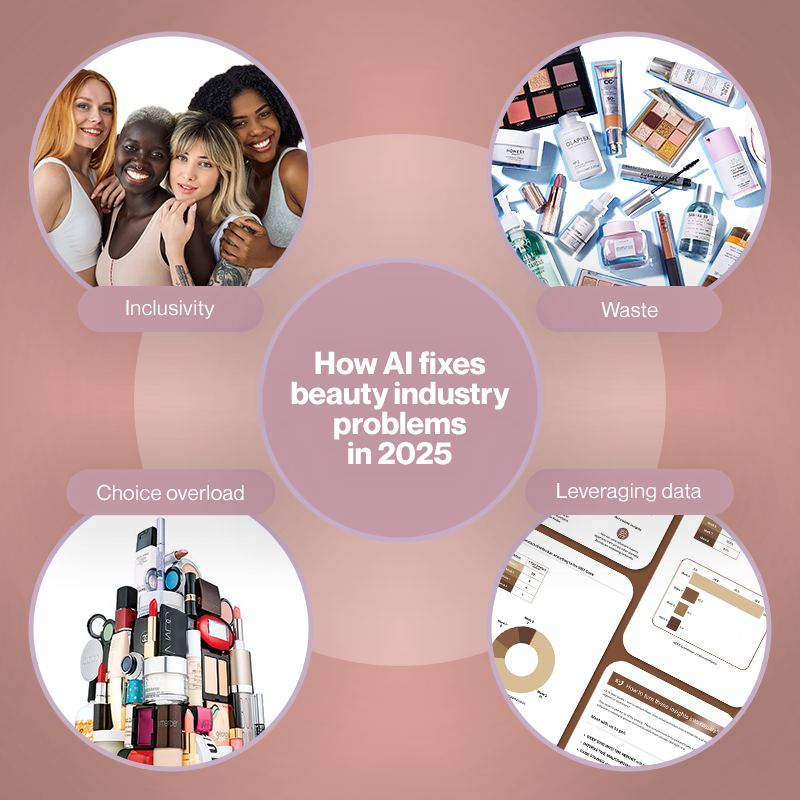The modern beauty aisle is a paradox. It promises personalization and choice, yet countless customers feel ignored, overwhelmed, and misunderstood. These are not minor issues; they are fundamental beauty industry problems that impact everything from brand perception to the bottom line.
Brands champion diversity in glossy campaigns, but the reality on the shelf (and the website) often tells a different story.
The result? Billions in lost revenue, broken customer trust, and a mountain of environmental waste. But what if you could bridge these gaps, transforming frustration into loyalty? This is where beauty AI turns these well-known beauty industry challenges into opportunities.
True inclusivity still eludes beauty brands

Across skin tone, gender, and ability, the struggle for true representation remains one of the most significant challenges faced by the cosmetic industry. Men remain underrepresented, despite Gen Z men being more open to exploring skincare and makeup. And disability? Most products are physically and digitally inaccessible.
Arbelle’s Inclusivity in Beauty Report reveals a perception gap: while brands tout diversity in campaigns, users often find the actual product ranges lacking.
-
- 53% of Black consumers report difficulty finding beauty products that match their skin tone.
-
- Many luxury brands offer limited shade ranges, often with fewer than 30 shades per foundation line.
-
- Deep skin tones remain underrepresented even in brands with larger shade selections.
-
- Consumers expect broader shade ranges (often 100 to 200 distinct shades) to truly reflect real-world diversity.
-
- AI-driven shade-matching technology is essential to help brands better serve diverse skin tones and fill gaps in product offerings.
Statista confirms this shift in expectations: 40% of Gen Z rank diversity as a top factor when choosing beauty brands.
And when it comes to men, beauty remains a largely untapped opportunity. As explored in Arbelle’s breakdown of the men’s beauty market, men are increasingly investing in skincare, makeup, and everything in between, driving unprecedented growth in the market.
Accessibility remains a largely ignored challenge in beauty. Arbelle’s Accessible beauty and AR tech reveals how vision impairments, limited dexterity, and cognitive differences create real barriers in the shopping experience. Brands that fail to prioritize accessibility not only exclude millions of potential customers but also miss a significant market opportunity.
✔ The fix
Arbelle’s Foundation Shade Finder uses the Monk Skin Tone Scale, a 10-point system developed by Harvard University professor Dr. Ellis Monk, to provide a more inclusive match across the full spectrum of human skin tones.
This inclusive tool lets anyone — regardless of gender, background, or ability — upload a selfie and receive a match instantly. That reduces friction, boosts confidence, and helps brands:
- Increase conversion across overlooked segments
- Reduce mismatches and returns
- Build trust with underrepresented shoppers

But inclusive technology should go beyond shade matching, with adaptive UX, voice-enabled AR, and more accessible virtual try-on interfaces improving the customer experience for people with disabilities, as detailed in Inclusive beauty and AI and Accessible beauty and AR tech.
Waste and returns: A $13 billion leak
Product returns don’t just hurt your bottom line; they are a symptom of deeper beauty industry problems, wrecking your sustainability metrics. Every failed match is a round trip to the landfill. Physical testers? Single-use plastic, tossed after two swipes.
According to Arbelle’s “$13 Billion Opportunity” report, returns cost beauty brands billions each year in shipping, handling, and unsellable inventory.
Makeup AR lets customers try before they buy, without touching a thing. No messy testers. No guessing games. It uses augmented reality to render hyper-realistic simulations of how a product will look on a user’s face.

Better data. Fewer returns. And a meaningful drop in cosmetic waste. Brands like yours can eliminate thousands of testers and cut return rates by double digits.
Too many products stifle confidence
The paradox of choice is real. More options don’t always mean better decisions. In beauty, too much choice often leads to hesitation, decision fatigue, and abandoned carts.
Even if your catalog has 300 SKUs, the average shopper only seriously considers three. As one Reddit user in r/MakeupAddiction puts it:
“Too many options leaves me overwhelmed. When I get overwhelmed I shut down completely. A lot [of] people with anxiety want a simpler life with less options but it’s so hard sometimes when culture and society tells you to want more and have more.”
That’s the sound of customer confidence crumbling, one that AI-powered product recommendation engines help restore.
Here are a few features you can implement to lead shoppers to the right choice:
| Smart quizzes. Brands like Fenty Beauty and IL MAKIAGE have popularized quizzes that feel less like forms and more like conversations. Customers answer targeted questions about their skin behavior and preferences to get tailored product matches based on what’s worked for others like them. |
| AI Shade Finder. Some brands take personalization a step further with AI-powered skin shade analysis. Customers upload a selfie or open their camera, and the system suggests foundation products based on their skin shade. Unlike quizzes, which rely on users to describe their skin, AI shade finders require no subjective input. The process is automated, faster, and involves fewer steps. While not perfect, it’s a more consistent and user-friendly way to find the right match. |
| Intelligent filtering. The most effective beauty platforms now enable: • Sorting by skin tone and undertone • Filtering by skin type (oily, dry, sensitive) • Finding reviewers in your specific age range or with similar concerns |
These practices aren’t just good UX. They drive revenue. Brands using Arbelle’s recommendation systems have seen:
- A significant lift in conversions
- Higher average order values
- Stronger retention from customers who feel understood
Close the loop with Arbelle’s Makeup AR, and you transform that shortlist into a virtual fitting room. That AI filter makes shopping confident, not confusing.

See how AI personalization and AR work together here: Personalization and AI in beauty.
The multichannel maze
Shoppers don’t think in terms of “online” and “offline.” They move fluidly between your site, social media, stores, and influencer content. But most brands still treat digital and physical as separate tracks.
That leads to broken journeys, inconsistent experiences, and missed opportunities to convert.
Beauty AI makes it easier to connect all channels:
- Let customers test shades on mobile, then walk into a store already matched

Learn more: How Arbelle powers cross-channel VTO
You’re sitting on a goldmine of unused data
Most beauty brands have data. Very few use it well. Site analytics, customer preferences, product interactions: it’s all there. But without structure, it’s just noise. Among the many beauty industry challenges, failing to leverage existing data is one of the costliest.
With beauty AI tools like Arbelle’s, every interaction becomes a signal:
- Which shades are trending in real time
- What product combos users are trying the most
- Where customers are bouncing in the journey
Use this to fine-tune your next product launch, adjust inventory based on demand, and craft sharper marketing with proven appeal.

Dig deeper:
Final thoughts
Ultimately, every challenge, from mismatched shades to overwhelming choice, is the story of a customer feeling frustrated. These core beauty industry problems all lead back to a disconnect with the shopper.
The solution, therefore, must be rooted in understanding them better than ever before. AI and AR are the most powerful tools available to listen, adapt, and respond to individual needs at scale.
By placing this technology at the heart of your strategy, you do more than fix your business; you rebuild it around the one person who matters most: your customer.
Contact us
Get started with beauty AI and AR and we’ll help you turn challenges into growth opportunities.

